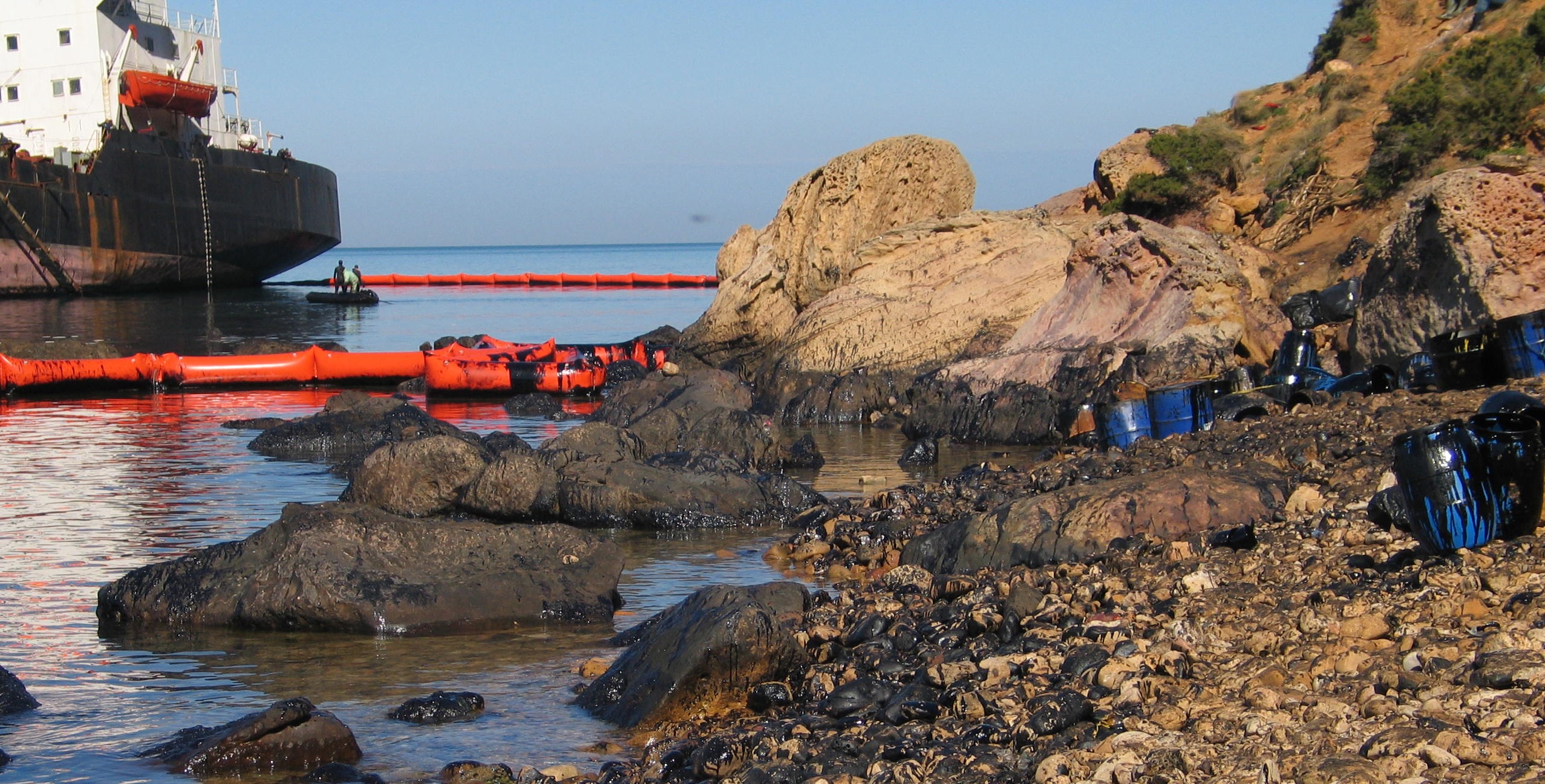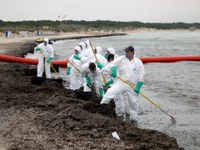Overview
Introduction
Coastal countries are exposed to the risk of pollution by oil or HNS generated by maritime transport activities along their coast and from those of the harbour and oil industries. To prevent from such risks, the legal international and regional instruments set up series of requirements to ensure proper response starting from the notification of incident until the completion of response and restoration operations.
Notification of Incidents
The notification and verification of the initial information concerning pollution incidents shall be done at the national level. After receiving and verifying the initial incident report, other Parties should be notified either directly or through REMPEC using a pollution report (POLREP).
To facilitate the notification procedure, REMPEC has established an online Emergency Communication Procedure that enables Contacting Parties to notify and exchange information about incidents.
Response strategy
Regardless of the scale of the problem, response to a marine pollution emergency can be expected to be successful only if response organization exists, if trained personnel and necessary equipment are available and the strategy of response has been agreed upon.
The successful outcome of an oil or HNS spill response operation will largely depend on the appropriate selection of spill response strategy. Spill response strategy adopted for a certain area will be indeed an agreed selection of available spill response techniques, with assigned priorities for their implementation, based on certain key criteria (such as characteristics of the area, availability of resources), as well as on some other factors (such as social and political) specific for each region, country or its part.
National Contingency Plan (NCP) for Response to Marine Pollution
Operational tactics for a specific incident and site will be determined only after considering various data concerning the actual spill site, type of the product spilled, meteorological and oceanographic conditions at the time of incident, availability of specialized personnel and equipment, etc. The activation of the Nations Contingency Plan (NCP) enables the implementation of the operational tactics.
The NCP is activated by the national competent authority (Cf. Country Profile) in consideration of the threat and complexity of the spill and threatened ecological and socio-economic resources. It could be activated automatically directly to respond to complex pollution or following an escalation process, known as tiered response when it come from national operator of the oil and harbour industry.
Response Options Methods and Techniques
Oil Spill
The choice of response options is very restricted and there are essentially three groups of actions that could be considered:
i) to treat the major part of spilled oil at open sea, in order to limit the quantity which will need to be dealt with on shore;
ii) to attempt to stop, or rather to limit, the spreading of spilled oil by "attacking" its leading edges (and in particular its downwind edge), thus protecting the coastline likely to be affected; and
iii) to protect the coast with all available means and prepare for the shore clean-up operation.
These three basic approaches are not mutually exclusive, and in fact a combination of two or all three of these is often applied.
The time factor is crucial in deciding which one to choose, since the first one is effective mainly in the initial phases of the accident, while after a certain period the third one becomes the only choice.
The oil spill response methods and techniques include:
1. Elimination of the source of oil (or other pollutant)
2. Spill containment and protection of sensitive resources
3. Removal of spilled oil from the sea surface
4. Removal of stranded oil (shoreline clean-up)
5. Transport, storage, treatment and final disposal of collected oil/oiled material
Related Documents:
Manual on Oil Pollution - Section II - Contingency Planning (IMO, 2018)
HNS Spill
The response mechanisms and organizational structures for oil and HNS are similar. However, at the technical level, response skills have to adapt for the distinct hazards posed by HNS.
Systematic Approach to emergency response
The systematic approach to emergency response assists the decision makers involved in the management of HNS emergency situations. It is a systematic sequence of steps for collecting information and making decision in a logical and methodical manner:
- The situation assessment phase
- The decision-making phase
- The implementation phase putting into effect the protective and corrective actions.
It is this stage that field operations are carried out
- The feedback loop
Response options for spills at sea
- Selection of measures based on physical properties
- Responding to releases of gases or volatile liquids
- Responding to releases of floaters
- Responding to releases of dissolvers
- Responding to releases of sinkers
- Disposal
- In situ burning
- Incineration
- Wet air oxidation
- Pyrolisis
- Landfill
- Deep-well storage
Related documents: Manuals have been prepared to provide advice on the different techniques that can be used to respond the HNS incidents
Manual on Chemical pollution Section 1 (Chapter 5 – Response Methods and Techniques) (IMO, 1999)
Risks of gaseous releases resulting from maritime incidents (REMPEC, 2018)
Regional Cooperation and Mutual Assistance
Any Party requiring assistance to deal with a pollution incident may call for assistance from other Parties, either directly or through the Regional Centre, starting with the Parties which appear likely to be affected by the pollution. The assistance may comprise, in particular, expert advice and the supply of, or placing at the disposal of the Party concerned the required specialized personnel, products, equipment and nautical facilities. Parties who are so requested, shall use their best endeavours to render this assistance.
Where the Parties engaged in an operation to combat pollution cannot agree on the organisation of the operation, the Regional Centre may, with the approval of all Parties involved, coordinate the activity of the facilities put into operation by these Parties.
In accordance with applicable international agreements, each Party shall take the necessary legal and administrative measures to facilitate:
- the arrival and utilization in and departure from its territory of ships, aircraft and other modes of transport engaged in responding to a pollution incident or transporting personnel, cargoes, materials and equipment required to deal with such an incident; and
-
the expeditious movement into, through and out of its territory of the personnel, cargoes, materials and equipment referred to in the above subparagraph. The principle is established by the international and legal instruments.
REMPEC Assistance
Any Party affected by a marine pollution can request assistance of REMPEC through the official communication channel or through the Pollution Report (POLREP). Assistance rendered by REMPEC may consist of providing advice, technical information and expertise (advisory and facilitating role)
Remote assistance
- providing requested information and advice, by telephone or other communication means, on operational, technical, administrative and legal aspects of pollution response (e.g. oil and HNS response), forecasting model, response to affected wildlife, etc.;
- providing assistance in communication with various interlocutors on behalf of the State(s) concerned; and
- providing advice on sources of information not available at REMPEC.
On-site assistance
- providing expert advice on the site of accident by dispatching REMPEC officers or by mobilising the Mediterranean Assistance Unit (MAU).
The MAU
The Mediterranean Assistance Unit (MAU) is network of experts in the field of preparedness for and response to marine pollution that can be mobilized to provide onsite and remote assistance to the Contracting Parties impacted by a pollution.



